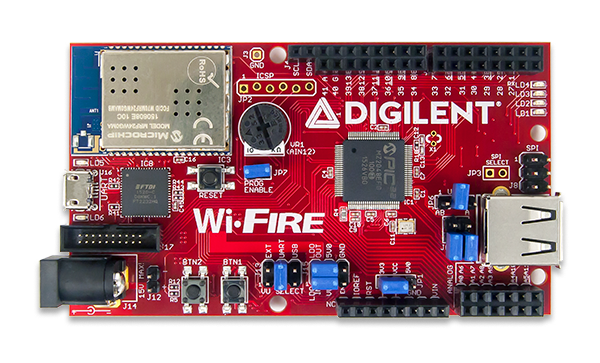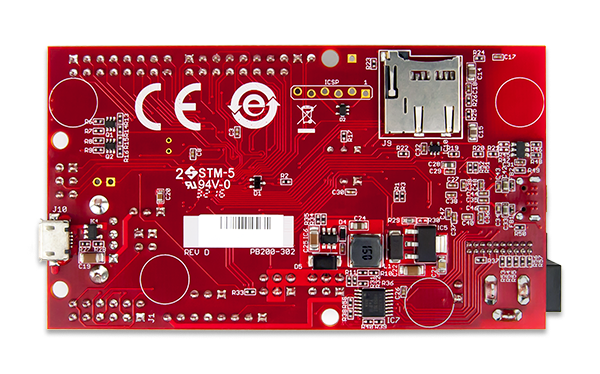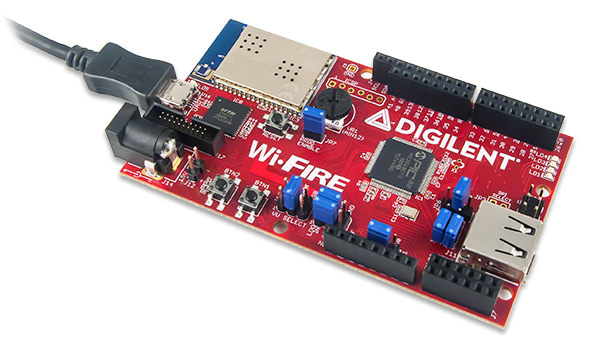Wi-FIRE
- 43 available I/O pins with on-board user interfaces
- DSP-enhanced core: Four 64-bit accumulators, single-cycle MAC, saturating and fractional math
- 12 analog inputs
- 6 50 MHz 4-wire SPI
- 6 UART modules
- 5 I2C modules
- PPS
The Wi-FIRE is now retired and no longer for sale in our store.
The Wi-FIRE is based on the popular Arduino™ open-source hardware prototyping platform and adds the performance of the Microchip PIC32MZ microcontroller. The Wi-FIRE has a WiFi MRF24 and SD card on the board, both with dedicated SPI signals. The Wi-FIRE board takes advantage of the powerful PIC32MZ2048EFG microcontroller. This microcontroller features a 32-bit MIPS M5150 processor core running at 200 MHhz, 2MB of flash program memory, and 512K of RAM data memory. The Wi-FIRE can be programmed using the Arduino IDE with the Digilent Core. It contains everything needed to start developing embedded applications. The Wi-FIRE features a USB serial port interface for connection to the Arduino IDE and can be powered via USB or by an external power supply. In addition, the Wi-FIRE is fully compatible with the advanced Microchip MPLAB®X IDE and works with all MPLAB ®X compatible in-system programmer/debuggers, such as the Microchip PICkit™3 or the Digilent® chipKIT PGM. The Wi-FIRE is easy to use and suitable for both beginners and advanced users experimenting with electronics and embedded control systems.
Download this reference manual
Tutorials
Example Projects
Additional Resources
- Easy Wireless Networking Using the Arduino Compatible chipKIT Platform PDF
- Guide on using the OpenOCD Debugger with the Wi-FIRE can be found on the Imagination Technologies website.
- Installer for the WiFIRE support files for OpenOCD and CodeScape SDK on the MIPS website






